Settlers
Torquay
The early settlers along Spring Creek that would become the town of Torquay were fishermen, agricultural workers and holidaymakers. James Follett was a boundary rider for squatter Andrew White. He built a boarding house to cater for the holiday makers and later he built the Pioneer Coffee Palace / Hotel and ran the Cobb and Co service from Geelong. Felix Rosser took up regular fishing in Zeally Bay and erected his fishing hut on Yellow Bluff overlooking Fisherman’s Beach. Richard Parker and son William, ironmongers of Geelong, camped for 3 months at a time on Spring Creek at Parkers Point (golf links elbow between bridge and river mouth). Henry (Harry) Rudd regularly spent weekends in Spring Creek fishing and camping by the river. He wanted a permanent place to build a house and made an application to buy land in Torquay that subsequently led to the first land sales. Three weeks after the sales in 1886 Rudd erected the first house a corrugated iron structure. Those that purchased in those first land sales represent the early settlers and many were Geelong residents and included pastoralists who established their holiday homes in Torquay. Names include Price, Anderson, Pearson, Beales, Taylor, Munday, Denmead, Wilton, Pride, Buckland, Bell (See also Torquay Improvement Association, Street Names, Family Histories and Stories).
From Baines, J. (1939).The History of Torquay. Geelong Heritage Centre.
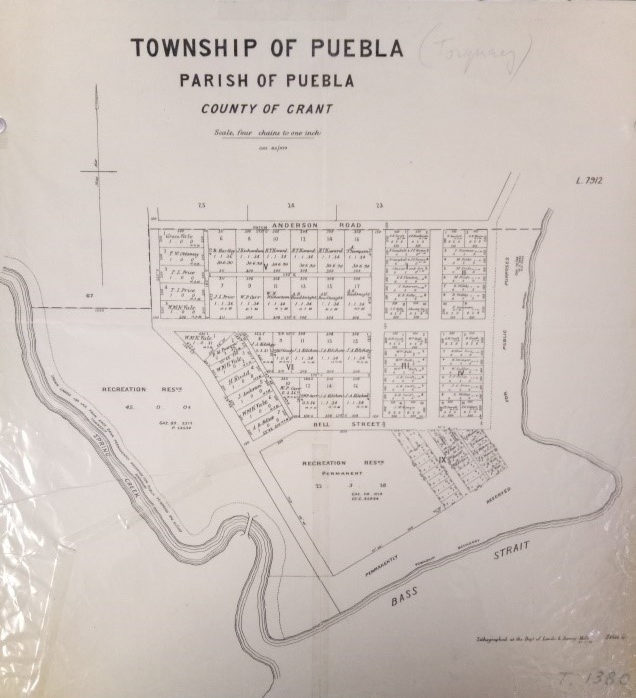
TDHS Collection
Bellbrae
The village of Bellbrae was first known as Jan Juc which is taken from the aboriginal word “jan jook” for iron bark and the trees that covered the area. From 1857 blocks of land were sold by the Crown and taken up by settlers. The first blocks were purchased by Joseph Gundy and William Bell. A township of about 200 acres was marked out in 1864 and sold in blocks of 10 acres each. A cricket team was established in 1862 and team members provide the names of early Jan Juc and district residents: Duffield, Gundry, Butler, Musgrove, Lugg, Carroll, Beard, Bland, Cummings, Keith, McLean, Mann and Helyar. The list of rate payers in 1869 also indicates the names of these early settlers (see picture). In 1861 a National School was opened, and the Post Office was opened in 1862 with William Cook, the local school teacher, taking on the role of post master. The Independent and Wesleyan churches were established in 1863 and 1868 and a mechanics’ institute and free library were opened in 1887. In the 1901 census Jan Juc had 105 male and 73 female residents. After the First World War in 1923 the name of the village was changed following some disquiet about the possible German origin of the name Jan Juc. A competition was held to rename the village and was won by Emma Bone who named it Bellbrae for the John Calvert Bell family of Addiscot near Jan Juc. (See also Street Names, Family Histories and Stories).
From Bellbrae. Notes by N. S McAdam, Historical Officer Barrabool Shire
Further resources (Available from TDHS)
Hooper, M. (2019). Bellbrae Post Office, Beach Shack Publishing: Jan Juc.
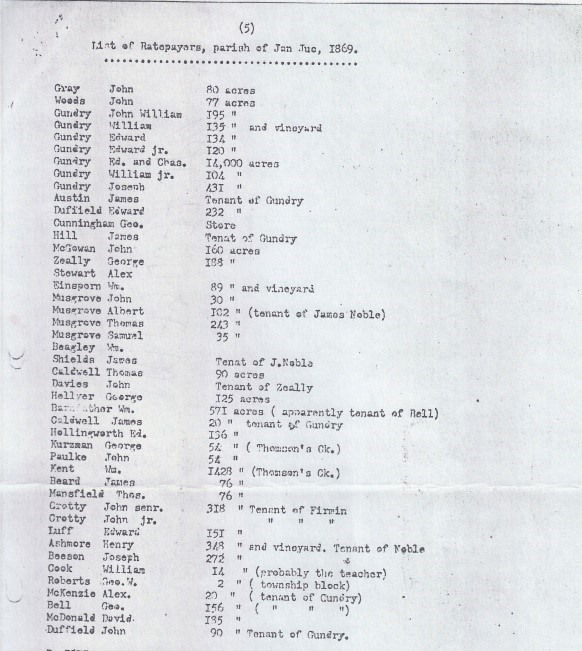
TDHS Collection
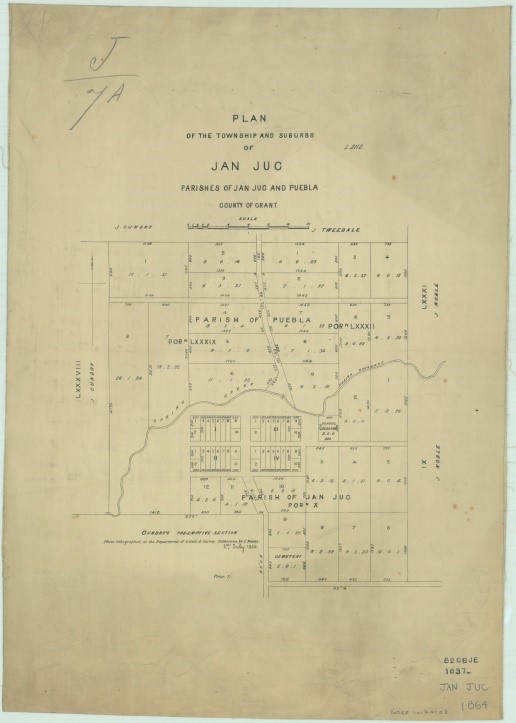
PROV Parish Maps
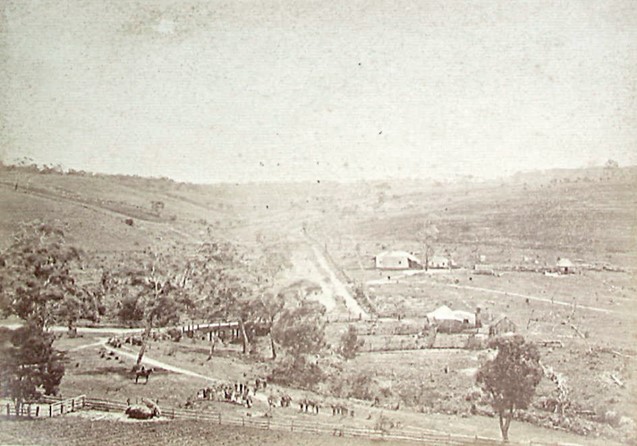
Courtesy State Library Vic
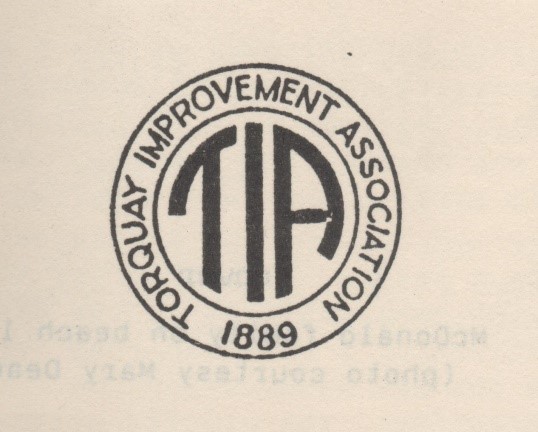
Torquay Improvement Association (TIA)
The TIA was formed following a meeting in 1888 at the Geelong office of John Longville Price (1838-1908) a solicitor and Geelong City councillor and mayor. John Henry Rudd (1862-1939) had proposed the meeting and called together people interested in the development of Spring Creek (Torquay). These people were Geelong residents who spent their weekends and holidays in Spring Creek. The new association was called the Spring Creek Improvement Association and the Committee’s aim was to further the interests of Spring Creek. Price was elected President, Rudd Secretary and the committee members were Messrs Fischer, Calder, Wilton, Beales, H Taylor and J Taylor. Early activities were to secure the provision of a suitable road from Geelong, request that permanent reserve land be set aside for camping and recreation, changing the name of Spring Creek to Torquay and the building of a public hall. The first membership fees of the TIA paid for Felix Rosser to construct a road over the sand hills, which was achieved by laying logs across the sandy track. In 1889 the committee advocated for the postal service to be extended from Mt Duneed to Torquay and subsequently a post office opened. Post boxes were installed at the post office in 1944 and in 1953 a postal delivery service began. Council were asked to number the houses. In 1902 R. C. Hocking, Secretary of the TIA made the first telephone call. Electricity was installed in 1929. Lobbying for a local police station began in 1945 and it took sixteen years to achieve a permanent policeman. As an interim in 1947 a Constable was appointed to be present from Christmas to Easter. From 1944 upgrading the sanitation system was petitioned and it was not until 1972 that the greater part of Torquay had a sewage system.
The TIA was not only for improvement but was for concerned with conservation and was aware for the need to protect natural bush and open spaces around the growing town. By 1883 a coastal strip had been gazetted and placed under a committee of management. The land now known as Taylor Park was preserved from sale and subdivision as residential blocks and in later years a man-made pond was established as a haven for birds. The TIA also realised that some clearing for roads and facilities would be necessary and so they purchased trees. For example, 400 hundred trees were planted around the public hall. Drifting sand was a problem that invaded the camping ground and the oval. The Forestry Department recommended planting marram grass on the dunes which arrested the drifting. They opposed the cutting of trees along the roads by road and public works activities and received permission to cut furrows and sow wattle and other seeds.
During the 100 years of the TIA they “endeavoured to ensure that the people of Torquay and surrounding districts have open spaces in which to take pride in a rushing, noisy world – there are still places of retreat – quiet and peaceful”.
Further resource (Available from TDHS)
Bath, M. Van Rompaey, M. & McQuinn, L. (1989). Torquay Improvement Association: One hundred years … a short history. TIA: Torquay
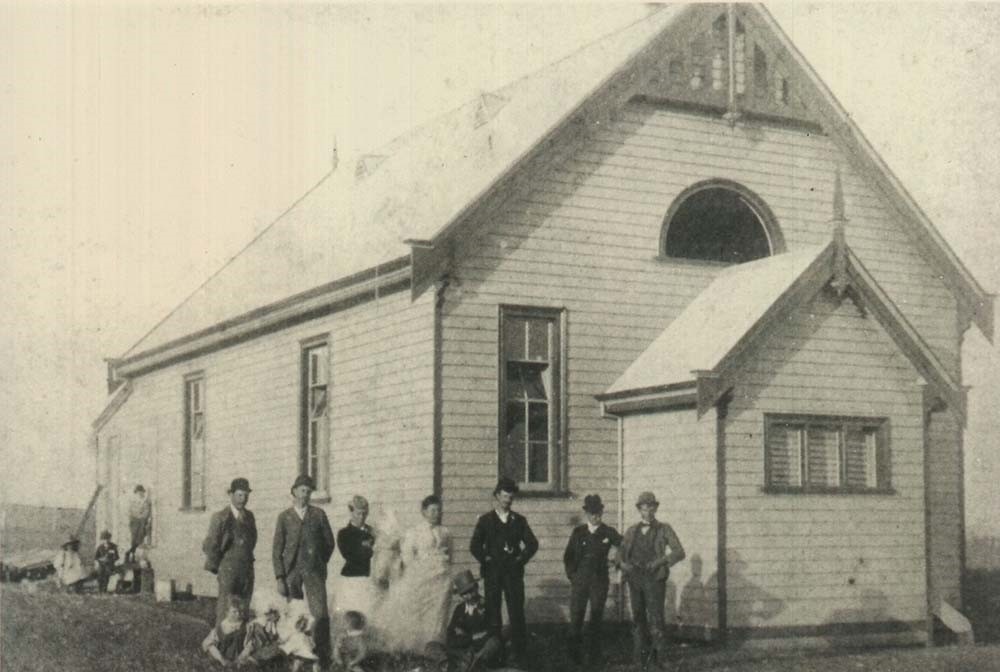
TDHS Collection
The Spring Creek Progress Association instigated the construction of the first hall in 1892. The current building replaced that hall when it was destroyed in the bushfire that ravaged Torquay in 1940. The new building was designed by A.C. Leith and Bartlett in an interwar Modern Functionalist style Since 1940 the hall has been socially significant for its important associations with community life and historically significant for its interwar architectural design.
